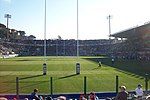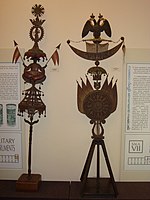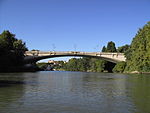Santa Croce in Via Flaminia
20th-century Roman Catholic church buildings in ItalyBasilica churches in RomeChristian organizations established in 1914Italy Roman Catholic church stubsRoman Catholic churches completed in 1914 ... and 2 more
Rome Q. I FlaminioTitular churches

Santa Croce in Via Flaminia is a basilica church dedicated to the Holy Cross on the Via Flaminia in Rome, Italy. Sacred Military Constantinian Order of Saint-George has its seat there.[1]
Excerpt from the Wikipedia article Santa Croce in Via Flaminia (License: CC BY-SA 3.0, Authors, Images).Santa Croce in Via Flaminia
Via Guido Reni, Rome Flaminio
Geographical coordinates (GPS) Address External links Nearby Places Show on map
Geographical coordinates (GPS)
| Latitude | Longitude |
|---|---|
| N 41.92873 ° | E 12.46784 ° |
Address
Basilica di Santa Croce a Via Flaminia
Via Guido Reni
00196 Rome, Flaminio
Lazio, Italy
Open on Google Maps










